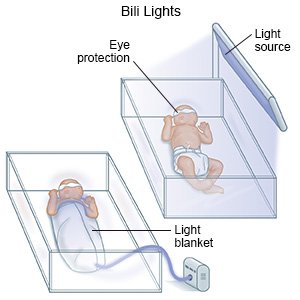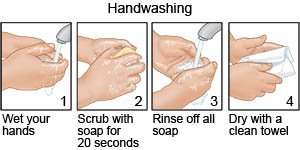Cephalohematoma
Medically reviewed by Drugs.com. Last updated on Sep 23, 2025.
AMBULATORY CARE:
A cephalohematoma (CH)
is a collection of blood under your baby's scalp. This condition usually happens when blood vessels rupture (burst) during vaginal birth. Blood leaks out of the blood vessels and pools in an area. A CH usually forms on 1 side of the head. Rarely, it may form on both sides.
Common signs of a CH:
- A bump or bulge on the top or back of your baby's head that may range from small to large
- A part of the scalp that moves easily over a swollen area
- An area that may feel soft at first and become hard days later
- Jaundice (yellowing of the skin or whites of the eyes) as the blood is absorbed
- Pale skin, weakness, or dark urine from anemia (low red blood cells)
Seek care immediately if:
- The skin over the CH is red, swollen, warm, or draining fluid.
- The CH is getting bigger instead of smaller.
Related medications
Call your baby's doctor if:
- Your baby is fussier than usual or cries and cannot be soothed.
- You have questions or concerns about your baby's condition or care.
Treatment
is usually not needed. A CH often goes away on its own within 1 month. Your baby may need any of the following if the condition continues or causes health problems:
- Aspiration may be used to remove blood through a needle. This is usually only done if the area is infected.
- Phototherapy may be needed if your baby develops jaundice. One or more lights will be placed above your baby. Your baby will be placed face up to absorb the most light. Your baby may also lie on a flexible light pad or be wrapped in the pad. Eye covers may be used to protect your baby's eyes from the light.

- A blood transfusion may be needed if your baby develops anemia. Donated blood helps increase the red blood cells in your baby's body.
- Surgery may be needed if the shape of your baby's skull is affected. A CH that continues longer than 5 weeks may cause calcification (hard bone deposits) where the blood pools. Surgery is used to remove the deposits.
Manage your baby's CH:
- Prevent an infection. Wash your hands before you care for your baby's CH. Use soap and running water. Dry your hands with a clean towel. Keep the CH area clean and dry. Signs of infection include red, swollen, or warm skin, or discharge (fluid) draining from the area.

- Check the CH for any changes. Examples include an increase in the size or change in the shape or color. The CH should get smaller over a few days or weeks. The center may go away before the edges do. This causes the CH to look like a crater. This is expected.
- Tell your baby's provider about any behavior changes in your baby. Tell the provider if your baby starts to cry more, or crying sounds different than before. Changes in your baby's feeding or sleeping routines should also be reported. Check for jaundice or signs of anemia.
Follow up with your baby's doctor as directed:
Write down your questions so you remember to ask them during your visits.
© Copyright Merative 2025 Information is for End User's use only and may not be sold, redistributed or otherwise used for commercial purposes.
The above information is an educational aid only. It is not intended as medical advice for individual conditions or treatments. Talk to your doctor, nurse or pharmacist before following any medical regimen to see if it is safe and effective for you.
Further information
Always consult your healthcare provider to ensure the information displayed on this page applies to your personal circumstances.
